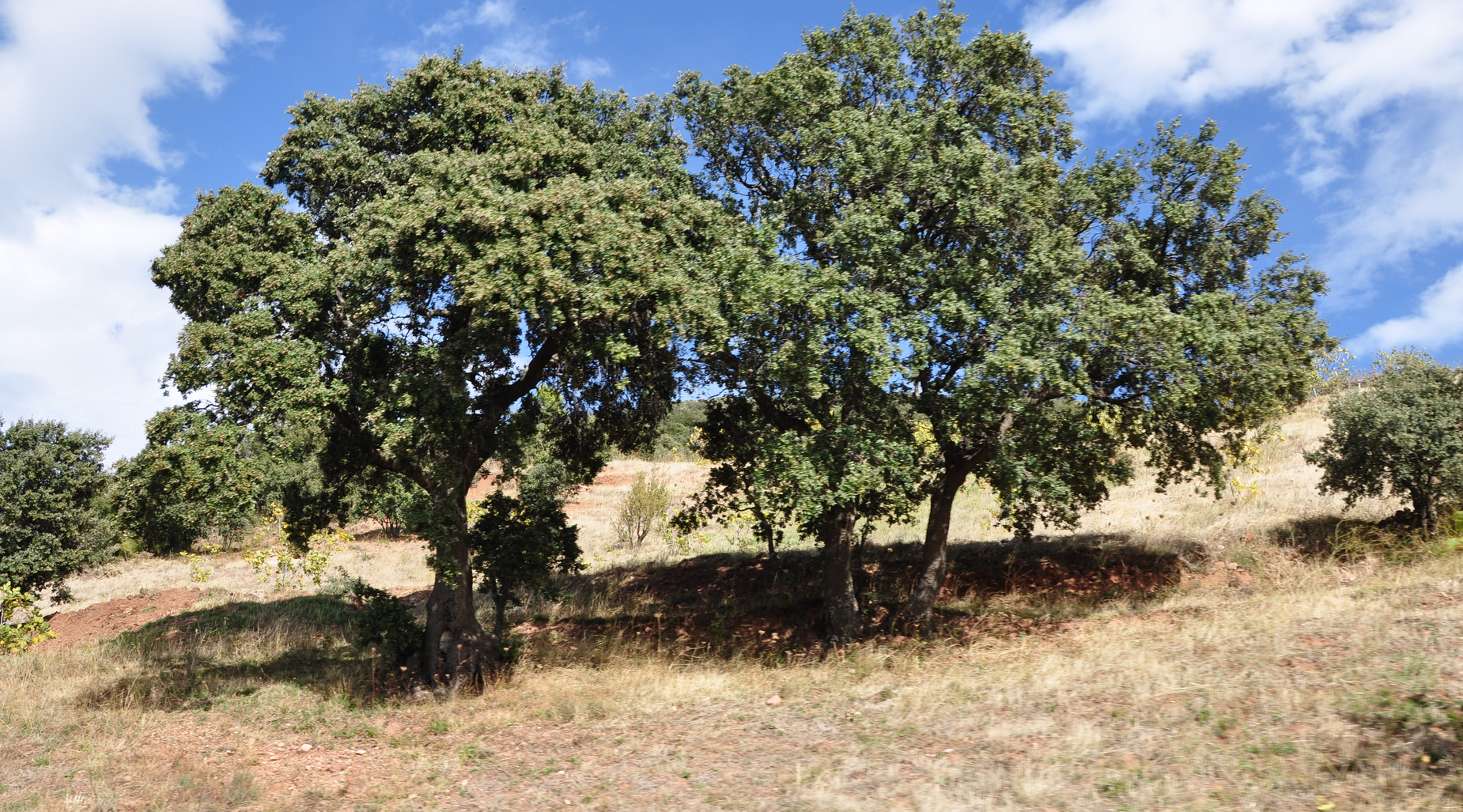Sas Baddes – The Sardinian Holm Oaks 0 Comments

In the centre of Sardinia, within the fascinating and wild Supramonte, there is one of the oldest and largest primary holm oak forests in Europe: Sas Baddes, the flagship of the state forest, one of the oldest and largest holm oak groves in Europe.
In the Montes forest, 4586 hectares on average heights of a thousand metres high, a few kilometres from Orgosolo, 1000 hectares are occupied by an expanse of holm oaks which vaunts imposing trees between 20 and 25 metres high, coexisting with maples, hollies, arbutus, phillyreas and yews.
The holm oak is a very long-lived plant (it can reach 1000 years) and we can call it "the giant of the Mediterranean" because it is up to 30 m tall, with a consistent dark green foliage, while the trunk can reach over two metres in diameter.
We may define Sas Baddes forest as magical because the incredible silence you sense inside makes you lose orientation and it seems like you are wandering in the middle of a green nothingness, which envelops you in a particular fragrance: it’s earth, it’s grass, it's flavourful, it's wet... it's nature you breathe and it embraces you.
It is an Old Growth Forest whose fascinating peculiarity consists in the fact that, free from any human interference, the trees are able to conclude their complete life cycle up to natural death, the duration of which can vary between 300 and 500 years. Analysing the old trees’ history, we may discover that they have completed their 4 phases constituting the structural cycle: Degradation, Renovation, Construction and the Biostatic phase which lasts 150-250 years. In an old forest there are numerous generations of trees where centuries-old plants, whose life cycle has been completed, grow next to younger plants passing them the baton.
Inside the heart of the forest there are two Nuragic structures: the Nuraghe Mereu, built with white limestone boulders, also known as Nuraghe Intro 'e Padente (inside the forest), which is a megalithic building with three towers and was probably built to protect a nearby village where remains of votive amphorae were found, and the Nuraghe Presethu Tortu also called Gorropu because it is close to the famous homonym gorge-canyon. There are also Nuragic remains such as the Sas Baddes village, nestled in the holm oak forest, and two Giants' Tombs, near the Sa Senepida valley.
We have already written about the beauty and peculiarities of Supramonte. In this place there is the force of nature that has created caves connected to each other, cliffs, sinkholes, underground waterways. Biodiversity makes it a wildlife protection oasis: mouflon, wild boar, wild cat, dormouse and marten. At the edge of the forest live hares, partridges and foxes. The golden eagle with the goshawk, the raven, the peregrine falcon, the kestrel and the sparrowhawk dominate the peaks.
Domenico Ruju, Sardinian photographer, says: “… looking out from the large terrace of Monte Novo San Giovanni you can enjoy one of the wildest scenarios in the whole of Europe: the Supramonte. The mountain presents itself immediately without pretence, revealing its harsh nature, without compromises, permeated with a shocking beauty.”
--Written by Daniela Toti
Teilen Sie uns Ihre Meinung mit!